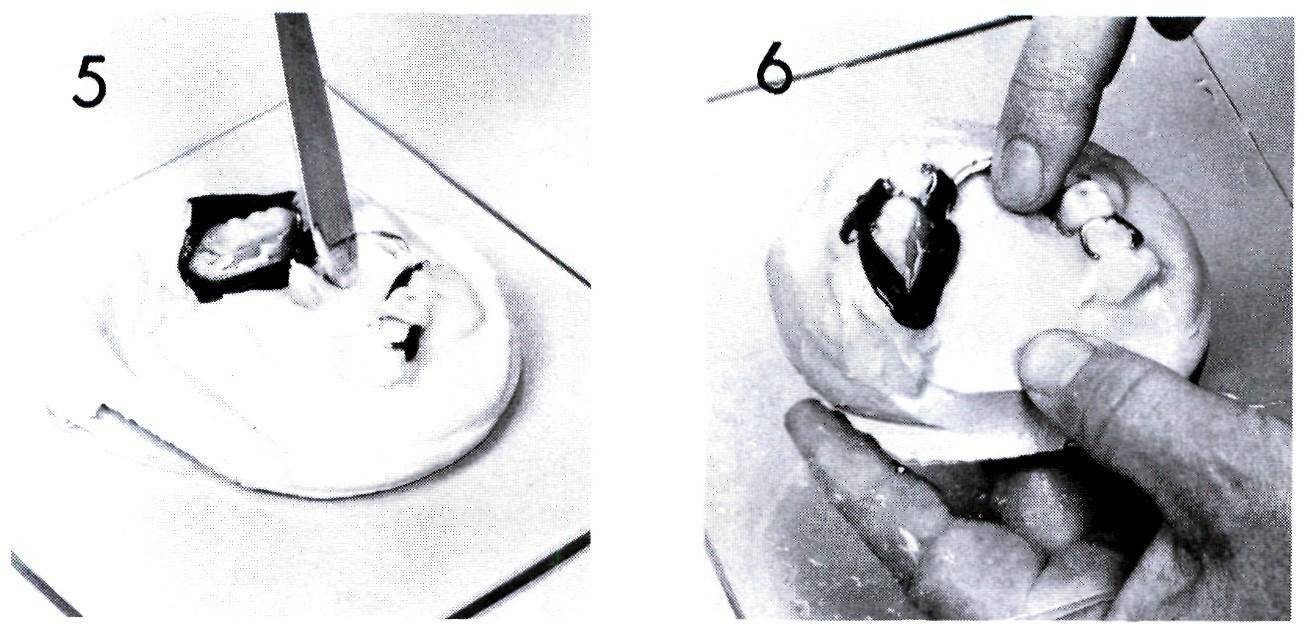The technique for relining removable partial dentures in the laboratory differs in several details from complete dentures. A Hooper Duplicator or an articulator may be used in the same manner as when relining complete dentures. However, partial denture relines may be handled more simply by the following technique.
Figure 1 Maxillary and mandibular partial dentures with reline impressions are shown as they appear when delivered to the laboratory. Reline impressions are made in the same manner as corrected impressions and with the same materials. Many dentists will reline a partial denture at the time of delivery rather than make corrected impressions, although this involves an additional visit by the patient.
Figure 2 The impression is surrounded with a bead of utility wax and stone is vibrated into the reline impression. Only the relined portion of the denture is filled with stone.
Figure 3 Additional stone is placed on a glass slab and the partial denture is inverted into it. Care must be taken that the stone does not surround the clasp or does not overlap the framework in any place, but the framework must contact the stone throughout as much area as possible. The framework will act as a key for replacing the partial denture on the cast after the impression material has been removed.

Figure 4 The partial denture and the cast are shown as they appear after the beading wax has been removed and the cast has been trimmed. Note that no stone extends over the framework or engages any of the clasps.
Figure 5 The mandibular partial denture is poured in the same manner.
Figure 6 Care is taken that the stone does not cover the lingual bar but the lower border of the lingual bar must contact the stone. The clasps are not engaged by the stone.
Figure 7 The completed mandibular cast is shown after the beading wax has been removed. You will note that the single tooth on the right
Stay updated, free dental videos. Join our Telegram channel

VIDEdental - Online dental courses


